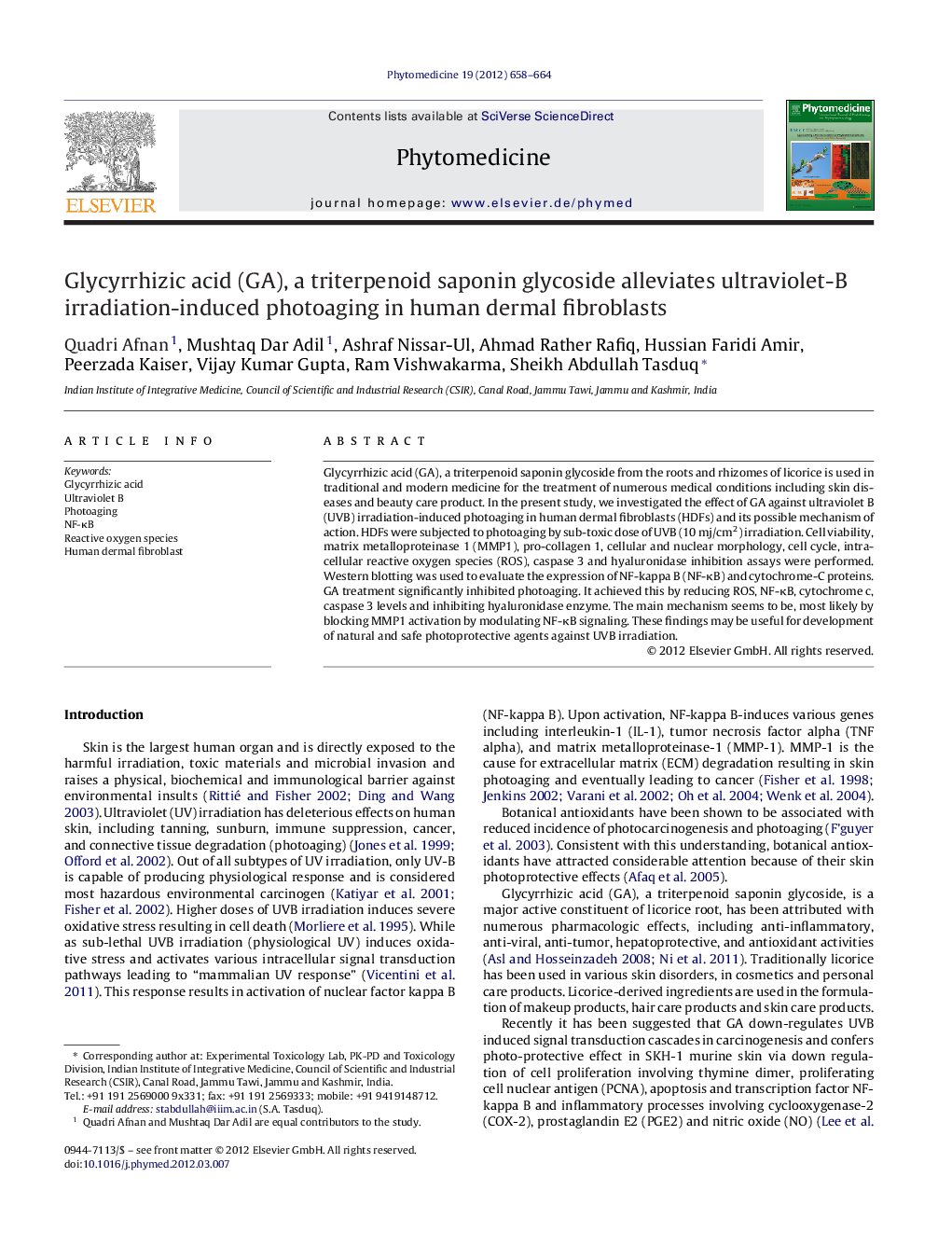| Article ID | Journal | Published Year | Pages | File Type |
|---|---|---|---|---|
| 2497081 | Phytomedicine | 2012 | 7 Pages |
Glycyrrhizic acid (GA), a triterpenoid saponin glycoside from the roots and rhizomes of licorice is used in traditional and modern medicine for the treatment of numerous medical conditions including skin diseases and beauty care product. In the present study, we investigated the effect of GA against ultraviolet B (UVB) irradiation-induced photoaging in human dermal fibroblasts (HDFs) and its possible mechanism of action. HDFs were subjected to photoaging by sub-toxic dose of UVB (10 mj/cm2) irradiation. Cell viability, matrix metalloproteinase 1 (MMP1), pro-collagen 1, cellular and nuclear morphology, cell cycle, intracellular reactive oxygen species (ROS), caspase 3 and hyaluronidase inhibition assays were performed. Western blotting was used to evaluate the expression of NF-kappa B (NF-κB) and cytochrome-C proteins. GA treatment significantly inhibited photoaging. It achieved this by reducing ROS, NF-κB, cytochrome c, caspase 3 levels and inhibiting hyaluronidase enzyme. The main mechanism seems to be, most likely by blocking MMP1 activation by modulating NF-κB signaling. These findings may be useful for development of natural and safe photoprotective agents against UVB irradiation.
